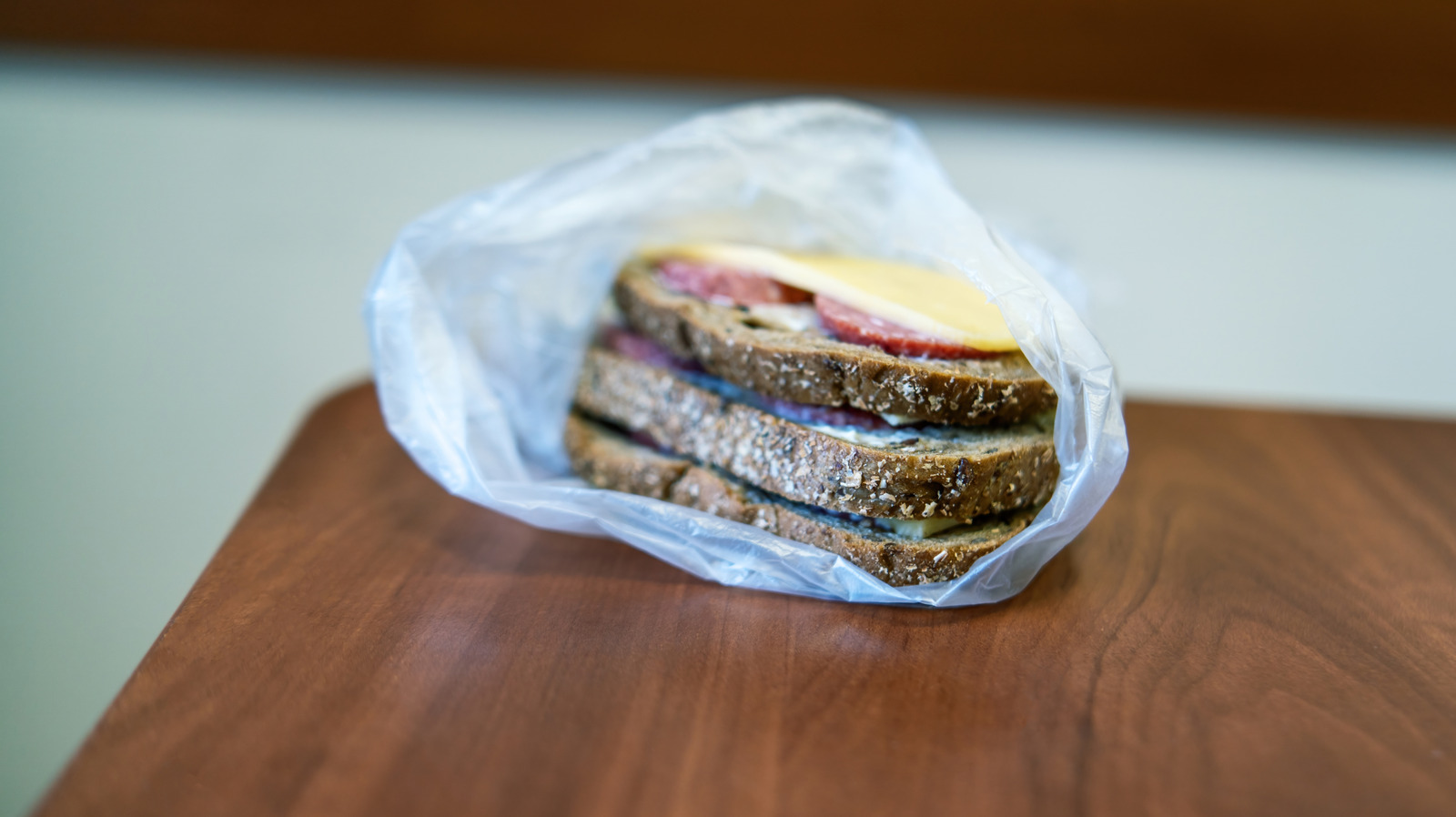
"Skimping on the moisture component is a major sandwich-building no-no. No one likes biting into a dry sando. However, that moisture component means (shocker) wetness - and when water molecules get trapped with no place to go, it can lead to soggy bread. For this reason, ditch the plastic sandwich bags for wrapping and storing your sammies. Whether packing a lunch or storing sandwiches for later enjoyment, plastic sandwich bags and plastic clingfilm both trap moisture inside and cause the bread to become soggy."
"Parchment paper makes a fabulous fit for the job. The material is often used to prevent baked goods from sticking to trays and pans in the oven. But, versatile parchment paper is made from cotton fiber or a wood pulp blend treated with a thin layer of silicone for moisture resistance - an ideal tool for wrapping and transporting bodega-worthy lunches. Porous parchment paper allows foods to breathe by keeping the airway passages open."
Sandwich moisture prevents dryness but can cause soggy bread when trapped with no escape. Plastic sandwich bags and clingfilm trap internal moisture, degrading bread texture during transport or short-term storage. Porous wrapping materials allow sandwiches to breathe; parchment paper serves well because it prevents sticking and is made from cotton fiber or a wood-pulp blend treated with a thin silicone layer for moisture resistance. Porous parchment maintains airflow, while airtight sealing is only necessary for long-term oxidation prevention. Plastic bags resist decomposition, taking roughly 100 to 1,000 years to break down because they are made from petroleum-based polyethylene.
Read at Tasting Table
Unable to calculate read time
Collection
[
|
...
]